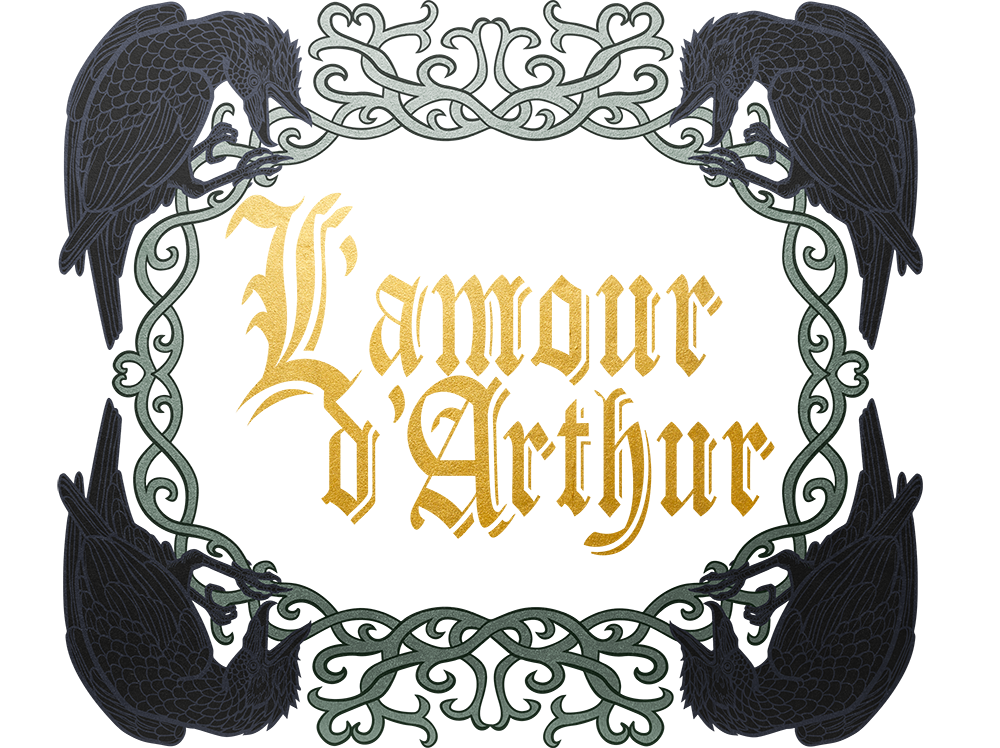Last edited:
-
Welcome to the Inner Sanctum!
We are an 18+ forum for writers and roleplayers of every genre. Whether you're a novice or a novelist, you've found your writing sanctuary here.
Review our rules, make an account and come see what the Sanctum has to offer!! For privacy reasons, some forums are not visible to guests.
If you have any issues verifying your account, please contact us
To prevent your account being flagged as possible spam, please disable any VPNs prior to registration.
You are using an out of date browser. It may not display this or other websites correctly.
You should upgrade or use an alternative browser.
You should upgrade or use an alternative browser.
World Le Monde d'Arthur
- Thread starter Semi-Sweet
- Start date
- Watchers 2
Currently reading:
World Le Monde d'Arthur
The current year is 1089 CE
Gramarye
The kingdom of Camelot is situated within the continent of Gramarye. It consists of two main islands and a handful of smaller surrounding islands. The larger island is known as Albion, the second one as Éire.
Under King Uther of Camelot, large parts of the southern island have been conquered, and his quest to rid the world of magic was forced many witches and sorcerers to go into hiding to avoid being burned at the stake. As a result, any magical, religious, or mystical activity is strictly illegal, and the penalty is death. Since then, even the suspicion of magic is enough to get the inquisitors to torture you into a confession. As such, people have started to wear the crests of chosen noble houses instead of religious symbols.
With the emergence of science over religion, certain changes have come to society. Homosexuality is accepted in the lower classes and, to an extent, within nobility as long as it is not by the heir apparent. However, within royalty, only marriage between men and women is accepted. Homosexuality is pedestrian.
Likewise, feminism has not reached the royals of Gramarye. While women can run businesses, they still cannot inherit ruling titles, whether noble or royal.
History of The Great Purge
The Maiden in the Meadow
Several years ago, the Forest of Brécheliant was ruled by Escorducarla, known throughout Gramarye by her epithet 'The Witch Queen.' Escorducarla was renowned for her beauty as well as her power. She took many lovers but never a husband, keeping the throne for herself. Though she lived and ruled for more than 300 years, it wasn't until the time of King Custennin the Blessed's rule that she gave birth to a daughter.
Blancheniege was said to be as beautiful as her mother but with none of the wickedness. Suitors from far away would brave traveling through the Petrified Forest in an attempt to get to the Witch Queen's castle to claim the princess as their bride. None of them returned home.
Eventually, Escorducarla grew jealous of her daughter. No longer did the men who entered the forest come for her but the princess. She ordered her huntsman to take the princess into a meadow where he was to kill her. But the huntsman failed. He had long suspected that he was the father of Blancheniege and, rather than kill her, instructed her to run.
And so she did.
She traveled eastward as far as she could, ending up in the kingdom of Guannes. But this was not the last the Witch Queen had in store for the princess. For Escorducarla's cruelty ran deep.
Three times a disguised Escorducarla came to the house of thieves Blancheniege had gotten refuge in. Twice she tried to poison her, until finally, with an apple, she succeeded. Then, assuming the thieves would bury the princess alive, Escorducarla left. As the seven thieves began to prepare the burial rites, the lake nearby stirred. From the dark waters, a woman rose before telling them that Blancheniege was not dead but sleeping an enchanted sleep.
The thieves kept Blancheniege in a glass coffin in the forest, one of them always standing guard over her. It is said that each evening as the last ray of sun would touch the princess' skin, the whole forest would cry.
Rumors spread of the Maiden in the Meadow until one day, the Lady of the Lake appeared to King Gorlois of Dunmonia, leading him to the woman inside the glass coffin. As he placed a kiss on the princess' lips, she awoke.
The War between Dumnonia and Camelot
 It is said that Uther's obsession with Queen Blancheniege began at a feast. Having conquered most of the lands around him, Uther had invited King Gorlois of Dumnonia and his queen to Camelot to discuss peace. That peace was never to happen.
It is said that Uther's obsession with Queen Blancheniege began at a feast. Having conquered most of the lands around him, Uther had invited King Gorlois of Dumnonia and his queen to Camelot to discuss peace. That peace was never to happen.
Dazzled by the beauty of Gorlois' bride, the widowed king abandoned the peace talks and gave Gorlois a single option: to hand over his lands and his wife or suffer the consequences. Gorlois refused, took Blancheniege home to their nine children, and prepared the kingdom for war.
Dumnonia would be a formidable adversary, using their well-known terrain to their advantage and slowly taking out Uther's soldiers. This war was not going to be won by force but by subterfuge.
One night, as a battle raged at the kingdom's border, Uther snuck into Castle Tingel and, under cover of dark, killed Gorlois. Blancheniege acted quickly. If Uther was to spare her children and bring them with them to Camelot, she would marry him willingly. And so Dumnonia became part of Camelot, Blancheniege and her nine children moving to the royal court alongside Uther and his son.
The Great Purge
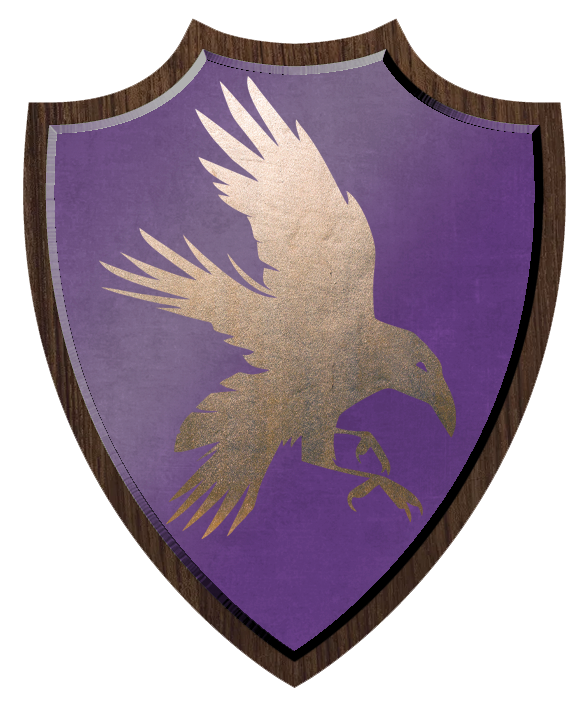 Rumors have it that the queen was the one who convinced her husband to start the purge, seeking revenge on her mother. Whatever the reason, after a time of relative peace in Camelot, Uther, having crushed rebellions and begun to create prosperity in the kingdom, decided on one last campaign.
Rumors have it that the queen was the one who convinced her husband to start the purge, seeking revenge on her mother. Whatever the reason, after a time of relative peace in Camelot, Uther, having crushed rebellions and begun to create prosperity in the kingdom, decided on one last campaign.
King Uther's forces then brave Brécheliant, stabbing and fighting their way through the tall trees, brambles, and thorns. At last, Uther, Blancheniege, and their soldiers arrive at the Witch Queen's castle. A great bonfire was set before the castle, the Witch Queen's banshee scream echoing through the Petrified Forest, the soldiers cheering on as Escorducarla was burned at the stake.
But she would only be the first to burn.
In what seemed like a complete obsession, Uther made a decree that any sorcerers were to be found and burned. But this did not only pertain to witches. Monks, nuns, priests, and any other religious figures were likewise burned. Churches and monasteries were razed to the ground.
Camelot was only the beginning. As witches and clerics fled north, the other countries followed suit. Religion of any kind was erased and exchanged for science and atheism.
It is said that magic left the lands then. The Ladies of the Lake retreated into their waters, the draig abandoned Gramarye, and the sidhe returned to Avalon.
As the thirteenth anniversary of the Witch Queen's death draws near, the lands prepare to celebrate the international holiday.
Gramarye
The kingdom of Camelot is situated within the continent of Gramarye. It consists of two main islands and a handful of smaller surrounding islands. The larger island is known as Albion, the second one as Éire.
Under King Uther of Camelot, large parts of the southern island have been conquered, and his quest to rid the world of magic was forced many witches and sorcerers to go into hiding to avoid being burned at the stake. As a result, any magical, religious, or mystical activity is strictly illegal, and the penalty is death. Since then, even the suspicion of magic is enough to get the inquisitors to torture you into a confession. As such, people have started to wear the crests of chosen noble houses instead of religious symbols.
With the emergence of science over religion, certain changes have come to society. Homosexuality is accepted in the lower classes and, to an extent, within nobility as long as it is not by the heir apparent. However, within royalty, only marriage between men and women is accepted. Homosexuality is pedestrian.
Likewise, feminism has not reached the royals of Gramarye. While women can run businesses, they still cannot inherit ruling titles, whether noble or royal.
History of The Great Purge
The Maiden in the Meadow
Several years ago, the Forest of Brécheliant was ruled by Escorducarla, known throughout Gramarye by her epithet 'The Witch Queen.' Escorducarla was renowned for her beauty as well as her power. She took many lovers but never a husband, keeping the throne for herself. Though she lived and ruled for more than 300 years, it wasn't until the time of King Custennin the Blessed's rule that she gave birth to a daughter.
Blancheniege was said to be as beautiful as her mother but with none of the wickedness. Suitors from far away would brave traveling through the Petrified Forest in an attempt to get to the Witch Queen's castle to claim the princess as their bride. None of them returned home.
Eventually, Escorducarla grew jealous of her daughter. No longer did the men who entered the forest come for her but the princess. She ordered her huntsman to take the princess into a meadow where he was to kill her. But the huntsman failed. He had long suspected that he was the father of Blancheniege and, rather than kill her, instructed her to run.
And so she did.
She traveled eastward as far as she could, ending up in the kingdom of Guannes. But this was not the last the Witch Queen had in store for the princess. For Escorducarla's cruelty ran deep.
Three times a disguised Escorducarla came to the house of thieves Blancheniege had gotten refuge in. Twice she tried to poison her, until finally, with an apple, she succeeded. Then, assuming the thieves would bury the princess alive, Escorducarla left. As the seven thieves began to prepare the burial rites, the lake nearby stirred. From the dark waters, a woman rose before telling them that Blancheniege was not dead but sleeping an enchanted sleep.
The thieves kept Blancheniege in a glass coffin in the forest, one of them always standing guard over her. It is said that each evening as the last ray of sun would touch the princess' skin, the whole forest would cry.
Rumors spread of the Maiden in the Meadow until one day, the Lady of the Lake appeared to King Gorlois of Dunmonia, leading him to the woman inside the glass coffin. As he placed a kiss on the princess' lips, she awoke.
The War between Dumnonia and Camelot

Dazzled by the beauty of Gorlois' bride, the widowed king abandoned the peace talks and gave Gorlois a single option: to hand over his lands and his wife or suffer the consequences. Gorlois refused, took Blancheniege home to their nine children, and prepared the kingdom for war.
Dumnonia would be a formidable adversary, using their well-known terrain to their advantage and slowly taking out Uther's soldiers. This war was not going to be won by force but by subterfuge.
One night, as a battle raged at the kingdom's border, Uther snuck into Castle Tingel and, under cover of dark, killed Gorlois. Blancheniege acted quickly. If Uther was to spare her children and bring them with them to Camelot, she would marry him willingly. And so Dumnonia became part of Camelot, Blancheniege and her nine children moving to the royal court alongside Uther and his son.
The Great Purge

King Uther's forces then brave Brécheliant, stabbing and fighting their way through the tall trees, brambles, and thorns. At last, Uther, Blancheniege, and their soldiers arrive at the Witch Queen's castle. A great bonfire was set before the castle, the Witch Queen's banshee scream echoing through the Petrified Forest, the soldiers cheering on as Escorducarla was burned at the stake.
But she would only be the first to burn.
In what seemed like a complete obsession, Uther made a decree that any sorcerers were to be found and burned. But this did not only pertain to witches. Monks, nuns, priests, and any other religious figures were likewise burned. Churches and monasteries were razed to the ground.
Camelot was only the beginning. As witches and clerics fled north, the other countries followed suit. Religion of any kind was erased and exchanged for science and atheism.
It is said that magic left the lands then. The Ladies of the Lake retreated into their waters, the draig abandoned Gramarye, and the sidhe returned to Avalon.
As the thirteenth anniversary of the Witch Queen's death draws near, the lands prepare to celebrate the international holiday.
Last edited:

| Population: | 367,026 (not including provinces) |
| Royal Family: | Uther Pendragon (king); Blancheniege Pendragon (queen); Arthur Pendragon (crown prince); Morgan Gorlois, Madoc Pendragon (princes); Moronoe, Morin, Morfudd, Mortaise, Morcades, Morag, Morgana, Morgause Gorlois (princesses); |
| Notable inhabitants: | Merlin Emrys (royal physician); Vortigern Pendragon (duke); Ulfius, Brastias (knights); Griflet (squire); Lucas (Arthur's personal servant); Sir Kay (seneschal); |
| Politics: | Early on in his rule, Uther took control of what was known as the Seven Kingdoms: Benoic, Gore, Laudonia, Listeneise, Gaunnes, and Dumnonia. While Dumnonia fought for independence, the other five kingdoms gave up rule in exchange for Uther's mercy. The smaller kingdoms have been provinciated under the banner of Camelot. Though the former kings retain their titles, Uther rules as High King. A duke has been appointed to the province of Dumnonia. Uther's inner circle consists of the court physician Merlin Emrys and his twelve Knights of the Round Table. These knights include the kings of his provinces, as well as others who have earned their titles through feats of accomplishment:
|
| Recent History: | Camelot is a kingdom in Gramarye that the legendary King Bruta founded. Before Uther took over the throne, his much-beloved father, Custennin the Blessed, ruled. On the day that Custennin died, it is said a dragon could be seen flying over Castle Camelot. With a great strategic mind, King Uther conquered several of the surrounding regions around Camelot, expanding the kingdom to encompass much larger commerce making trading with foreign domains unnecessary and only done for specialty goods. In opposition, Camelot has a significant export of goods, especially in the wool business. The kings who willingly let go of their kingdoms have been spared and now serve as knights at Uther's court. But not all were willing to let go of their thrones so easily. King Gwrtheyrn Gorlois was one such man. As his kingdom of Dumnonia laid under siege from Uther's army, Uther himself gained access to Castle Tintagel, where he killed Gorlois silently. Opposition fell soon as Uther married Queen Blancheniege, sparing her and her children, as they all left Dumnonia behind and moved to Castle Camelot. It was after this incident that the Great Purge happened. The kingdom has since then lived in peace and prosperity. Uther keeps preparing his son, Arthur, to take his place in the future, but that can only happen if Arthur is able to find a wife and father an heir. |

| King Uther Pendragon 59 Uther took over Camelot after his father, King Custennin the Blessed passed. Custennin was infamous for being loved both by his people and the clergy. He was pronounced a saint before his death. While still a prince, Uther married Igraine. She was a servant girl, but her "beauty surpassed that of all the women of Camelot." Uther defied tradition to marry her. She gave him two sons before illness claimed her life. Uther's reign is different from his father's. As he took over the throne, he decided to take over the infamous Seven Kingdoms. Though five of them surrendered without much fuzz, Dumnonia refused. Uther marched on the country, killed the king, and married the queen. |
Queen Blancheneige Pendragon 43 Blancheneige was born to the Witch Queen. After growing up to be even more beautiful than her mother, the Queen of Brécheliant. After running away from the forest, king Gorlois found her in the woods and made her his queen. She bore him nine children before King Uther ultimately killed King Gorlois and made her Queen of Camelot. With Uther, Camelot started a war on magic and religion, starting with the Forest of Brécheliant. The only thing Blancheneige took from the Queen's Castle was a full-length mirror. She now rules by the side of Uther, seen as the softer side to Camelot's rule. Even though the two have been married for thirteen years, the queen has born no children to Uther. It is whispered that she is barren; the truth is, a son born from her and Uther could stop Uther's plans of having Arthur take over the kingdom, so they keep themselves from siring new heirs. | 
|

| Vortigern Pendragon 57 Arthur's uncle and younger brother of Uther, he was a bishop before the Great Purge. He was spared due to being the king's brother and made a duke. Due to his former status, the man never married and has yet to do so. |
Madoc Pendragon 19 Arthur's younger brother. He bears the title of prince. While his skills as a knight are not as great as those of his brother, he still manages to win tournaments. He is said to like the local taverns as well as the local brothel. | 
|

| Morgause Gorlois 21 The oldest of the princesses and Morgan's younger sister. She's received many suitors trying to buy their way into the good graces of King Uther, but she has stubbornly denied all of them. She appears calm, reserved, regal, and - unlike her sister - graceful and poised. Beneath this cool and collected appearance, however, Morgause is quite turbulent. Though a benevolent and giving person, Morgause suffers from emotional instability due to years of keeping her emotions bottled up. |
Moronoe Gorlois 20 Moronoe was born a year after Morgause. Moronoe is a kind, elegant, graceful, angelic, loving, gentle person and a hopeless romantic. At first, she is seen as a slightly shy, playful, and carefree young woman because she has been sheltered for most of her life. However, she has a mind for the political intricacies of court life. She is aware that she cannot marry before Morgause does, so it seems she's taken a keen interest in ensuring a proper nobleman asks for her hand soon. | 
|

| Morin Gorlois 19 Morin is the fourth-eldest Gorlois. Of all Blancheneige's children, Morin takes the most after her as far as personality goes. She spends her time reading beneath the great oak trees of the gardens and reading to children at the local orphanage. She is a bright, spirited, headstrong princess with a passion for adventure and exploration. But unfortunately, her tendency to explore the more mysterious depths of the forests (or, more importantly, the world beyond Camelot) can lead to an array of problems for both herself and her friends and in the confines of her personal life. |
Morfudd Gorlois 18 Morfudd is an icily cold beauty. While she has just come of age to marry, she knows it will be long before she can do so. She is a quiet woman, always watching those around her with a deathly, cold stare. Morfudd has gained a significant amount of intelligence over the years due to her love of books, which provided her with an elevated vocabulary, an active imagination, and an open mind. She is very confident and outspoken in her opinions and seldom likes being told what to do. Despite all this, she doesn't have very many friends. Her smarts and free-thinking attitude make her stand out at court, who regard her as a strange behind her beauty. | 
|

| Mortaise Gorlois 17 Styling herself after her mother, Mortaise is busy readying herself for entering society. She is almost at the age where she can marry. She is feisty and no-nonsense, with zero tolerance for anyone who dares to belittle her. She initially rejected her role as a princess because of the unethical requirements of the position, including being forced to remain within the castle at all times, forced to marry for political gain rather than love, and being treated as a tool rather than her own person. |
Morcades Gorlois 16 Morcades has always had a bad relationship with her stepfamily. Unlike the rest of the family who appreciates Uther giving them a life of luxury, Morcades is just young enough to remember her childhood in Dumnonia fondly. Despite being raised in what she sees as toxicity and emotional abuse, Morcades declared herself independent and strong-willed by remaining kind-hearted and self-loving, not allowing the bitterness surrounding her life to overtake her and morph her into someone as cruel as her stepfamily. She makes the most of her misfortunes by remaining optimistic about the possibilities of a brighter future, keeping herself preoccupied with art. | 
|

| Morag Gorlois 15 Morag is an intelligent, resourceful, and highly talented young woman. However, she can be overly uptight and far too absorbed in work ethics to focus on relaxing, family, and friends. Though she notices this and appears to have some regret over her busy schedule, her obsession with bringing her dreams of opening her own orphanage to fruition overshadows it all. She also, for the most part, had appeared to accept that over the years. With a strong sense of honor and integrity, Morag firmly believes nothing deserves to be obtained in the world unless it's done through hard work. |
Morgana Gorlois 14 Morgana Gorlois is the youngest princess in the family. Blancheneige dotes on her endlessly, and the princess seems to follow her mother like a shadow. She is sea-loving, headstrong, strong-willed, practically fearless, and physically capable. Though she has moments of self-doubt, she has great pride in who she is and is generally too stubborn to back away from new challenges. Morgana approaches new experiences and tasks with the utmost seriousness and will stand her ground to fight for what she values even when all seems lost. | 
|

| Merlin Emrys 37 Merlin became the court physician weeks after Uther began his rule. In addition, to be a master of chemistry and medicine, Uther values him as his most trusted advisor. And for a good reason – it is almost as if he can see the future. He has a somewhat peculiar appearance. His skin remains as young as a dewy youth; however, his hair is stark white as that of an older man. There is an air about him that is both fascinating and terrifying. |
Last edited:
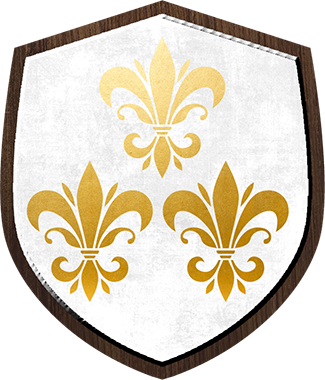
| Population: | 293,440 |
| Royal Family: | Ban de Benoic (king); Elaine de Benoic (queen); Lancelot de Benoic (prince); |
| Notable inhabitants: | Agravadain the Black (duke); the Lady de Maris (duchess); Ector de Maris (marquess); Antemes, Gratian, Placidas, Phariance (knights); |
| Politics: | Camelot has provincialized the kingdom; however, due to the willing surrender by King Ban to Uther, the kingdom's hierarchy remains much the same. While Uther reigns as the High King, Ban is still considered king. There is taxation on the domain, but they are still free to do their own business. The tax is handled by the court. Its main exports are bulk grains, such as corn, beans, animal feed, and rice. Additionally, most of Gramarye's alcohol is produced here. The wine business is especially fruitful. |
| Recent History: | The history of Benoic and Gaunnes is tightly intertwined. The former king of Benoic, Bran the Blessed, had twin sons, Ban and Bors. Because of this, it was unclear who was to inherit the throne. As the two grew up, they competed in everything, always trying to prove their superiority to the other. But both of them were smart. They knew it wouldn't come down to a simple tournament of strength. While Bors spent his time charming the nobility, ban grew his relations with the merchants, artisans, and peasants. The king could see that this dispute would end in a civil war. Knowing the neighboring kingdom was facing a similar dispute, a bargain was struck between the two kings. Ban and Bors would marry the twin princesses of Gaunnes. Bors and Evaine would rule Gaunnes, while Ban and Elaine would rule Benoic. However, the dispute between the brothers had left the country vulnerable, and when Uther invaded, they had little means of defense. A short campaign later, Benoic was forced to fall under the rule of Camelot, and Ban to join Uther's knights of the Round Table. |
Last edited:
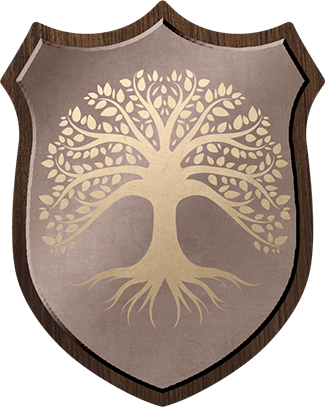
| Population: | 268,205 |
| Royal Family: | James of Cambenet (king); Anne of Cambenet (queen); Richard of Cambenet (crown prince); John of Cambenet (prince); Margaret, Mary, Sophia of Cambenet (princess); |
| Notable inhabitants: | Eustace (duke); |
| Politics: | The king and his warriors, known as the Sons of Don, are based in the stronghold called Caer Dathyl. The rest of Cambenet is divided into territories (called cantrevs) ruled by many lower dukes who owe their loyalty to the king. In addition, a collection of villages called the Free Commots exist outside any cantrev's jurisdiction, answering only to the king. |
| Recent History: | Cambenet is filled with forests, hills, valleys, rivers, lakes and marshes of many kinds. Its most common tree varieties are oaks, elms, and rowans in the lowlands; and pines, alders, and hemlocks in the uplands. Once ruled over by the evil sorceress Queen Achren, Cambenet is now under the authority of the just King James, a member of the family known as the Children of Don, descendants of Lady Don and her consort, Belin. The evil Queen Achren was overthrown by her consort and student in magic, Arawn. Taking the Iron Crown, Arawn became master of the fortress of Annuvin, the Land of the Dead. |
Last edited:
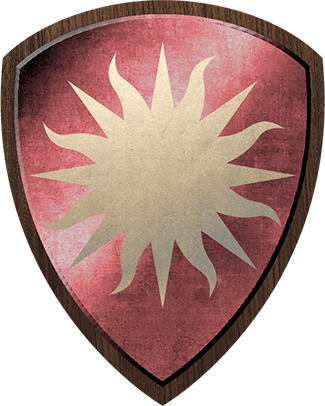
| Population: | 367,550 |
| Royal Family: | Leodegrance of Cameliard (king); Nurmoph of Cameliard (queen); Guinivere of Camliard (princess, missing); Guiniffer of Cameliard, Guindolyn of Cameliard (princesses); |
| Notable inhabitants: | Gilmere, Bertholai, Gaunter, Raynold (knights); Gothel (dame); |
| Politics: | Cameliard is in a perpetual state of grieving. After losing her daughter, the queen has taken a vow of silence. She never looks at her husband, always waiting by the window, waiting for her daughter to return. The king, in turn, has turned his attention to trading. Cameliard serves as the main port for trade with the kingdoms from Éire. |
| Recent History: | The oldest known of Cameliard's line of monarchs is King Vorr. During his reign, Cameliard was in a bitter war with their rival kingdom, Gore. Under King Vorr's rule, a complex tunnel system was built beneath Cameliard to safely move the kingdom's knights and supplies wherever King Vorr needed. At one point, Cameliard was invaded by Vorr's sworn enemy, the ruthless General Caeknuirzaess. As her minions ravaged the kingdom, Caeknuirzaess made it to Cameliard Castle, where she battled Vorr personally. Amid their battle, Caeknuirzaess found that the final pages of Vorr's personal diary contained a profession of his love intended for her. The feelings were mutual, and the two declared their love. They were later married, and their union brought peace between their two factions. Centuries after King Vorr's reign, Cameliard was ruled by Queen Nurmoph's father. Eventually, Nurmoph became queen and married Leodegrance who became king. During her pregnancy, Nurmoph became gravely ill, forcing the kingdom's citizens to search for a fabled magic mâche with healing abilities. Unfortunately, it was found to exist only in the garden of Dame Gothel. The King asked the Lady to relent the plant, but she refused. He then pursued to demand the plant, but again she refused. When he sent his knights to retrieve the plant by force, every attempt was mysteriously thwarted, her own knights beating his. The king feared for the queen's life and broke into the garden one night to get the plant for her. When he returned, she made a salad out of it and ate it, but she longed for more, so her husband returned to the garden to retrieve more. As he scaled the wall to return home, the Lady caught him and accused him of theft. He begged for mercy, and she agreed to be lenient, allowing him to take all the plants he wanted on condition that the baby be given to her when it was born. Desperate, he agreed. The couple hid away in the marshlands before the birth in an attempt to avoid surrendering the baby, only for the Dame to turn up at their door upon the baby's birth, unhampered by their attempt at relocation. When his wife had a baby girl, the Dame took her to raise as her own and named her "Guinevere" after the plant her mother craved. |
Last edited:

| Population: | 236,506 |
| Royal Family: | Agwisance (king); Iseult the Fair (princess); Lanceor (crown prince); |
| Notable inhabitants: | Marhaus (knight); |
| Politics: | Éire is the name of the southern kingdom and the island west of Albion. The domain used to encompass the entire island, but Cameliard and Northgalis splintered off after the Scarlet Wars. The Scarlet Wars was a series of violent conflicts between the primary Kingdom of Éire and the northern nobles. The war began in the late 400 CE following growing tensions between the north noblemen and the King and lasted for 32 years, ultimately ending in the founding of the Cambenet. The main exports of Éire are vegetables, fruits, and herbs. |
| Recent History: | By the mid-400s CE, the predominantly urban city of Eblana was a politically volatile collection of self-proclaimed noble houses fighting for power. A gifted if unscrupulous warrior and influential business leader named Drumanagh was able to take advantage of the chaos and take over the city, naming himself king. One of Drumanagh's first actions was to cut all ties with Albion. The southern royals in Eblana already had a strained relationship with the nobles of the north, who felt these royals had damaged the forests of the Verdant Expanse in their rush to build their cities. Nevertheless, the northerners sent the grandson of their founder and leader, Thulid, to Eblana in a diplomatic effort. The Kingdom of Éire's agents instead tortured and killed her upon his arrival, beginning the long and brutal war that would be their downfall. In 678 CE, the Scarlet Wars began. The remainder of King Qith's years were spent in battle. For over nine years, he expanded his kingdom rapidly; the scattered and isolated colonies had no quick way to warn each other against Qith's encroaching armies. Those same armies became skilled in infiltrating these settlements and spreading disinformation and distrust, quashing insurgency before it could happen. However, Qith, always a boastful man, met his downfall in the village of Fryssington. He and his troops had advanced upon the town, believing it was housing refugees. Finding none, the king began a victory speech in the town square, at which point he was killed by the arrows of the north and their rebel allies. Rule of the kingdom fell to Thynruth, Qith's firstborn son. Thynruth was a necromancer, and his tyrannical rule spent entirely at war was known for its dark and sinister magic. Under his powers, the army became twisted with the blessings of the demon Stolas. While Thynruth successfully avenged his father when he returned to Fryssington, killed the rebels, and burnt the village to the ground, he too fell in battle to forces led by Keillagli of Cambenet when he attempted to retake the north. Thynruth was succeeded by his younger brother Tuekken, who lacked both his father's military skill and his brother's arcane prowess. He inherited a war that the kingdom was no longer winning. He entered into an infernal pact with the Demon Prince of Gluttony to secure victory. It was insufficient, and Keillagli of Cambenet herself killed Tuekken during the Battle of the Umbra Hills, ending Qith's bloodline and freeing the north from Éire. Keillagli founded the kingdom of Cambenet, and the remaining nobles of Éire put a new family on the throne, crowning a man named Gwile. Before the Great Purge, Éire was famous for its healers. Éire was the greatest opponent to the Great Purge and the kingdom that took the longest to cleanse, but today it is like the rest of Gramarye. |
Last edited:
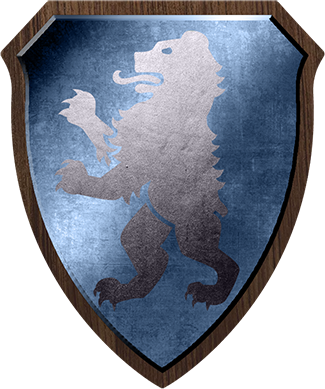
| Population: | 273,550 |
| Royal Family: | Carados dunAralod (king); Brandeis (queen); Sagremore (crown prince); Werarmaewynn (princess, missing); |
| Notable inhabitants: | Ettard (Lady); Sir Brunor the Black, the Good Knight Without Fear (formerly); Dinadan d'Estrangore (formerly); Myrddin Wyllt (formerly); Breunor le Noir (formerly); Lionesse, Linet (duchesses); Gringamore (knight, duke); Laurel (marchioness); Turquine (knight); |
| Politics: | The five clans were once enemies locked in constant war after the Sundering of Gore, but when invaders threatened them from the seas, the five clans joined together under the sword of Clan dunAralod to defend their lands. Eventually, the clans succeeded in protecting their lands from the invaders and formed the Kingdom of Estrangore and made the clan leaders dun Yaghael, dun Motrog, dun Alfodgrod, and dun Krabrek their lords of the kingdom, then crowned dunAralod as their king. Five Great Houses rule the kingdom and have since its founding. Every ten years, they elect a councilor to serve as a representative and maintain their alliances. Estrangore is famed for its metalwork and produces the finest smiths and craftmanship. |
| Recent History: | Shortly after the Sundering of Gore, Estrangore was founded by the northern clans and led by Clan dunAralod. A short time after 412 CE, when frost giants wrecked the city of Orcanie, Estrangore welcomed the refugees. During the Fimbulwinter, somewhere between 518 and ~538 CE, the Five Kingdoms convinced Stranggore and Estrangore to join in an alliance against Iselin the Snow Queen, and together their forces battled Iselin back through to her own realm. Ten years ago, while Princess Werarmaewynn dunAralod was on her year-long pilgrimage to grow as a healer, she had a dark vision of evil taking root beneath Estrangore. As she returned from the tundra wastes north of Estrangore, she traveled through the city and hired mercenaries to help her delve into the Underdark. During her time in Estrangore she managed to anger Nugham dunYaghael, the owner of the Yaghael Quarry. She and her companions ran into the Quarry without the clan's permission, as she needed to head in that direction to find the source of the evil. She has yet to return. |
Last edited:

| Population: | 205,200 |
| Royal Family: | Bors the Elder (king); Elinor (queen); Gwenbaus (duke, physician); Bors the Younger (crown prince); |
| Notable inhabitants: | Gracian, Annecians, Accolon, Manassen, Lionses, Richard at the Lee (knights); Blamore de Ganis, Bleoberis de Ganis (noble knights); Robin of Loxley (lord); Marian at the Lee (Lady); David of Doncaster, Gilbert with the White Hand, Arthur a Bland, George a Greene, Tuck the Friar, Will Stutely, William Gamwell, John Naylor (outlaws); |
| Politics: | The current head of state is King Bors the Elder. His law is absolute throughout the kingdom. Whether or not he created the law himself, King Bors has enforced the kingdom's ban on witchcraft and was prepared to seize the estate and lands of Robin of Loxley when he was accused of practicing forbidden magic. The local citizens took matters into their own hands, and a mob razed the Loxley homestead to the ground, leaving the nobleman presumed dead. In exchange for protecting its citizens from chaotic horrors and shadowed evils beyond its borders, the crown of Gaunnes demands that its citizens pay it tithes, follow its laws, and bow to the installed local leadership. This accord has led to a prosperous century, primarily for the Gaunnian political elite. Otherwise, most citizens of Gaunnes are left to their own devices. However, tensions brew beneath the chafing watch of the knights. There are several noble houses in Gaunnes, whose influence is determined by their wealth, their relationship with the royal family, and their political and geographical position ruling certain lands. Gaunnes is very much a military kingdom, producing knights for Camelot. It is also the kingdom with the highest crime rate. Gaunnes is asked an especially low tax for being the place where Queen Blancheniege hid from her mother. |
| Recent History: | With the founding of the city of Bacchae, civilization began to grow, and eventually, in 439 PD, Baraque became the first king of the newly-established Kingdom of Gaunnes. During the Fimbulwinter, between 518 and ~538 CE, the Five Kingdoms convinced Stranggore and Estrangore to join in an alliance against Iselin the Snow Queen, and together their forces battled Iselin back through to her own realm. Gaunnes spread to encompass its neighbors - namely, the peoples of the Werth Fields and the Caenleigh Valley - before finally conquering the Sandorn Dominion in about 545 CE. With the kingdoms' victory in the Caenleigh War, all of Middle Albion was controlled by the Kingdom of Guannes. Sandorn was the last remaining bastion of the previous government over the Caenleigh Valley. However, eventually, it was conquered, and the whole Caenleigh Valley became a province of Guannes. With the conquest of the Caenleigh Valley, Bacchae is now the most central and second largest city in the kingdom. This has made Bacchae an essential center for travel and trade. |
Last edited:
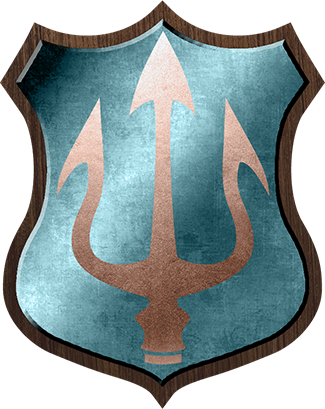
| Population: | 148,025 |
| Royal Family: | Urien (king); Yvain (crown prince); |
| Notable inhabitants: | Bagdemagus, Meliaganus (knights); Maleagant (lord); Taliesin (bard); |
| Politics: | At the height of its power, the Kingdom of Gore was one of the largest and most powerful the world had seen. Its cultural, technological, military, and magical advancements surpassed almost all others, before or since. Even following the catastrophe that was the Sundering, echoes of the once mighty nation can be seen across Albion in the form of ancient and neglected ruins. For decades, the Sisterhood of the Moon held by far the most power, as one of a small handful of Gorian organizations to survive the Sundering, with membership based upon aptitude and not lineage. High priestess Uriana reorganized the order to direct the surviving Goreans, eventually crowned as queen. She became the sole ruler of the Kingdom of Gore nation. Her blood runs through the current royal family. |
| Recent History: | Gore is the oldest known bastion of civilization in Gramarye. Most human societies stemmed from this kingdom, which is believed to be thousands of years old. The oldest temples to the principal deities of the Old Religion have been uncovered within the city, and as such, it is considered the holiest place in modern Gramarye. It has therefore been through many wars and conflicts. Those that live within it do so because they feel that they can fight against this, and they call it a privilege to exist in this harsh landscape as devotion to their ancestral bonds. Because it is such a holy place, the Great Purge was a significant hit to the kingdom's culture. The city of Gore is the only city to have survived every catastrophe that has destroyed Gramarye: from the elemental chaos of its founding to the wars between factions during the Sundering. During the founding of the kingdom, in which Paiste helped defend Gore, the white dragon shed a tear for the sacrifices his devoted followers had made in the war. From that tear was born a crystal, the Moon Opal, preserved for millennia until shortly after 510 CE. Before the Sundering, Gore encompassed the modern kingdoms of Gore, Cameliard, Shalott, Stranggore, and Estrangore. The Magisters of the ancient Gore Kingdom, at first a nameless caste made up of nobles who had unusual intelligence, strength, skills, or wealth and thus found favor with the ruling monarch. Their vast arrogance and greed, garish and multicolored clothing, and decadent habits did not endear them to other Goreans. In fact, these powerful families became convinced that they were superior to the rest of their countrymen. As a member of the same caste, the queen Nix approved of the term and made it official. Plumbing the depths of the great Moon Opal for knowledge, they discovered primitive magic. As time passed, they distanced themselves from the lower castes. They began using their rank to selfishly guard their magical power, restricting access to the magical Moon Opal to only themselves. The access of arcane magic to the ruling caste began to split the Goreans was hereditary; families that belonged to the highest caste frequently arranged marriages to maximize the magical ability of their offspring. This selective breeding, combined with frequent access to the Moon Opal, resulted in humans with progressively stronger magical powers and a greater understanding of how to use those skills. Over time, the ever-more reckless use of magic by the Magisters and their queen led to their slow corruption and addiction to the power it granted and attracted the dread forces of demons to Gore. The unlimited magical power offered by the demon lords seduced the queen and many of her servitors, and they agreed to grant the demons entrance to Gore. Finally, giving themselves over to magic's seductive corruption, the Magisters fell to darkness and began to worship the Demon King, Mephisto, as their god. To cement their dark pact, the ecstatic Magisters opened a great, swirling portal from the power of the Moon Opal, which would allow the demons' armies to access the world, followed by Mephisto himself. In the cataclysmic war that followed, thousands died as the demons swarmed over the lands of Albion and laid siege to the lesser people's sleeping cities, leaving only ash and sorrow in their wake. Though the brave knights rallied from the heinous betrayal of their rulers and rushed to defend their ancient homeland, they were forced to give ground, inch by inch, before the fury of the demons' onslaught. The demons were finally foiled by the efforts of the bard Taliesin, who in his battle with Queen Nix collapsed the Moon Opal, killing many Magisters and condemning those who survived to the sea floor. Yet many nobles did not meet their fate at the bottom of the sea. Some had betrayed their queen at the last minute, realizing the horrors she would unleash upon the world. These defectors had fled the capital city of Sorhaute and were thereby spared when the Great Sundering tore Gore apart. As the remaining Gorians hunted down the remaining demons, distrust of the upper castes created a power vacuum that was not easily filled. The kingdom of Gore broke into the modern-day kingdoms. When Uther Pendragon took the throne of Camelot, he offered the Kingdom of Gore to surrender to him and be spared his wrath. King Urien accepted and became a knight of his court. Gore remained essentially unchanged, keeping their capital and continuing their use of magic, albeit with a law against communing with demons. When the Great Purge happened, Gore was the largest disapproving kingdom of the new system but eventually had to accept the rule of the High King and his new queen. |
Last edited:

| Population: | 22,920 |
| Royal Family: | Frederik Westergaard (king); Margrethe Westergaard (queen); Caleb Westergaard (crown prince); Jurgen, Lars, Franz, Liam, Villads, Pelle, Asger, Nohr, Aksel, Mikkel, Severin, and Kai Westergaard (princes); |
| Notable inhabitants: | Gerda (handmaiden); Jennifer Lind (opera singer); |
| Politics: | Thule, unofficially known as the Northern Isles, is a subarctic archipelago in the Northern Ocean between Gramarye and the North. It is the northernmost part of the Gramarye. The islands lie about 80 km to the northeast of Orcanie. The largest island, known as "the Mainland," is the fifth-largest island in the Gramaryan Isles. There are an additional 15 inhabited islands in Thule. The archipelago has an oceanic climate, complex geology, rugged coastline, and many low, rolling hills. Thule has an oceanic temperate maritime climate, bordering on but slightly above average summer temperatures, the subpolar variety, with long but cool winters and short, mild summers. The islands are primarily self-reliant, though they do have some fish exports. |
| Recent History: | During the Fimbulwinter, Thule became an uninhabitable frozen wasteland under the attack of Iselin, the Snow Queen. Those that didn't die fled southward to Orcanie. It is only in the last 100 years that resettlement has begun. Only recently did the individual islands form into an island under the former king, Krisitan. The current king is only the second generation of rulers. |
Last edited:
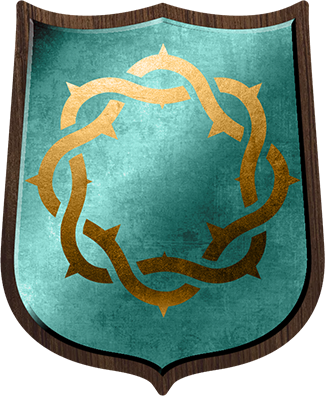
| Population: | 148,025 |
| Royal Family: | Lot (king); Anna (queen); Gawain (crown prince); Taneu, Thametes (princesses); Agravain, Guerrehet, Gaheriet, Erec, Tristan (princes); |
| Notable inhabitants: | Laudunet of Landuc (duke); Laudine of Landuc (marchioness); |
| Politics: | Dinas Eiddyn, the capital of Laudonia, is a city north of Gadifer Lake. Gadifer Lake is said to be one of the few remaining entrances to Avalon, as people generally seem to disappear in the area. As the royal family is currently under a magical spell, the kingdom is in chaos, looking to Camelot for leadership. |
| Recent History: | When Uther took the throne of Camelot, he gave Laudonia the chance to surrender before he invaded. But, knowing they could not win over Camelot's knights, the king surrendered. During the Great Purge, the land became a rare haven for both witches and sidhe. Dinas Eiddyn has become a center for the highest levels of craftsmanship and blacksmithing. But when the kingdom eventually turned against the magically-inclined, burning witches at the behest of Camelot, a sidhe queen cursed the princess. Cursed to sleep until she receives her true love's kiss, another sidhe, realizing that the princess would be frightened if alone when she awakens, used her magic to put every living person and animal in the palace asleep, to awaken when the princess does. Thirteen years have passed since then. |
Last edited:

| Population: | 113,190 |
| Royal Family: | Pellehan (king); Pellinore (crown prince); Malorak (prince); Garlon (duke); |
| Notable inhabitants: | Meliodas, Tristran, Felot, Osanna, Dodinas, Brian de Listnois (knights); Perceval (farmer); |
| Politics: | Listeneise is a kingdom made out of mostly forests and small agricultural settlements. As if mocking Gore's worship of the moon, Listeneise took to worshipping the night. To the Listeneise, reputation and status are of the utmost concern, and morality and principles of right and wrong are viewed too often in that light. At their core, however, the Listeneise, like their Gorean kin, do not find themselves short of noble souls stepping up to stand against the crashing tide of darkness that threatens to sweep their beloved kingdom and the rest of the world in demonic fire. |
| Recent History: | Listeneise is said to be a cursed land. It is a land of forests and ruins so old that no one seems to remember from where they came. The Forest of Brécheliant was situated between the border of Listeneise and Gore. When the Gorians adopted their moon-based religion, they outlawed the practice of demonic magic. The use of its dangerous powers was punishable by death. However, many noble-born loyalists of Queen Nix survived the Sundering and grew restless. They spoke against Uriana and the Sisters of the Moon. Pellagios, the leader of this movement, declared the Sisters cowards for refusing to wield the demonic. In an attempt to protest the Sisters' law, Pallagios and his followers unleashed a terrible magical storm upon Sorhaute. The Sisters could not bring themselves to put so many of their kin to death, so they decided to exile the reckless nobles from their lands. Banished from Gore by their brethren, the nobles led by Pellagios left their ancestral homeland behind them and fled into the lands of Listeneise. When Brécheliant was taken by Uther, he kept on into Listeneise, destroying every coven and monastery he could find. While the kingdom now has a death penalty for the use of magic, it is said the forests hide many of those born with magic in their blood. |
Last edited:

| Population: | 126,205 |
| Royal Family: | Clariance (king); Epinogris (prince); |
| Notable inhabitants: | Balin (knight); Balan (knight); |
| Politics: | Free from outside influence, the kingdom of Northanhymbra has relied only on the indomitable spirit and tenacity of its citizens to make its own destiny in the world. Northanhymbrans have a culture of self-reliance. They are proud, stubborn, and loathe to accept the aid of outsiders. Of late, however, a series of events that occurred during the Great Purge has shaken Northanhymbra to its core. Recognizing the evil and chaos that had taken over the world, Northanhymbra have begun to acknowledge that they serve an important role in safeguarding the sanctity of Gramarye and, in doing so, have embraced the bad on magic's cause of fighting for a just and peaceful world. |
| Recent History: | The region of present-day Northanhymbra formed the core of the Gramaraian kingdom of Bryneich (from about 547), which united with Doire (south of the River Teihxis) to form the Kingdom of Northanhymbra in the 7th century. The historical boundaries of Northanhymbra under King Eadwine (reigned 616–633) stretched from the Hymber in the south to Abhainn Dubh in the north. After the battle of Dun Nechtain, its influence north of Abhainn Thuaidh began to decline as the Laudonians gradually reclaimed the land. In 1018 its northern part, the region between Abhainn Thuaidh and Abhainn Dubh was ceded to the Kingdom of Laudonia. Under the rule of King Eadwine, the nation thrived, evolving into a formidable middle-power capable of rivaling even Gore or Laudonia. By the start of 600 CE, Northanhymbra had become recognized as a significant entity in the political landscape of Gramarye. Emboldened by this fact, the kingdom's ruler, King Gennaus believed that his own armies would be more than enough to deal with any threat. Consequently, King Gennaus started the construction of the Gennaus Wall. This enormous stone barrier now separates Northanhymbra from Gramarye, attempting to forever remove his nation from what he considered "other people's troubles." The wall construction was completed before the reign of Gennaus' son, King Dariunne. He barricaded the majority of Northanhymbra behind the wall and closed off the nation from the rest of the world. While reluctant to follow the creed of Camelot's war on magic, King Clariance eventually joined after the fall of Laudonia. |
Last edited:
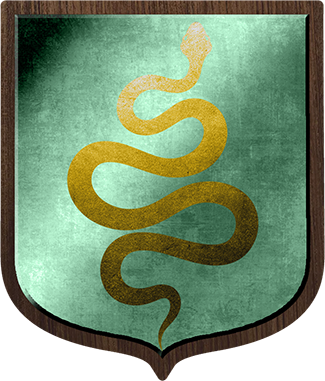
| Population: | 293,500 |
| Royal Family: | Cradelment (king); |
| Notable inhabitants: | Phelot (knight); |
| Politics: | Ruled by the royal family, the kingdom took part in the Noble Rebellion's birth shortly before the Scarlet War's start. The kingdom of Northgalis spearheaded the Northern Noble forces during the war against the Éiran royals. Like the other realms, the Kingdom of Northgalis applied the death penalty for its clergy and witches; an inquisitor accomplished the task, including hanging as gallows are present in their cities. |
| Recent History: | During the decadency of the Éiran kingdom, the Verdant Glades and surrounding lands were settled by the disenfranchised lords of the capital of Eblana, who was part of a group that left the city because they were desirous of the verdant and fertile lands to the northwest. They named their new home Galis, after the surrounding region, which had been named after the great Éiran general Galis who had once lived there. In time, their newly founded capital city served as a spiritual destination for the citizens of Éire. Under the leadership of Lord Lothament, the Northern Lords were victorious in the Scarlet War, pushing the royalists back to the Emerald Hills. Lothament fell in the assault on Castle Viridescent, and with the loss of his political skill, rifts developed between the allied nations of Northgalis and Cambenet. The main issue of dispute was a tax levied by Queen Achren to finance the protection of the borders. Though Northgalis attempted to retain its central role, Cambenet pulled their support from the alliance. Centuries ago, Northgalis' leaders codified the different healing-based traditions and belief systems. From these efforts, the Church of the Sacred Waters came to be. Northgalis served as the home of this church and became a popular destination for travelers seeking healing, wisdom, and inner peace. The church constructed temples and shrines throughout the far-flung lands, creating a hierarchy of religious leaders to oversee its followers. |
Last edited:
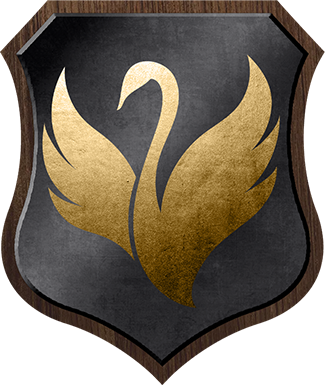
| Population: | 48,025 |
| Royal Family: | Lothus (king); Erec (crown prince); |
| Notable inhabitants: | Nudd, Creiddylad, Gwyn (knights); |
| Politics: | Officially the Admiralty of Orcanie is a maritime kingdom built on the islands of the same name. It is known for its legendary fleet and its far-ranging merchant ships making it one of the most prosperous nations in the known world. |
| Recent History: | Following the Goreans arrival in Orcanie, the colonists encountered the natives. Due to their large size and uncultured ways, they were known as orcs. Despite the Goreans' intention of living in harmony with them, the big and hardy tribe did not welcome them amicably and would raid the Gorean settlers for generations. Thus was born the Order of Embers, an organization dedicated to countering these attacks. Gwenivar, a group of orcs that had kept to their druidic heritage, broke off from the rest, and some eventually integrated into Orcanian society. Many years later, Admiral Lothin decided the time had come to end the bloodshed. He organized a final assault against the orcs and their city of Utgaard, assisted by the Gwenivar and Orcanians. Lothin faced their leader Lok Gatull and valiantly gave him the final blow. The orcish armies all faltered at once. From this victory, Lothin was promoted to king and became the patriarch and founder of House Loth. He would eventually pass on, but his descendants would live in fame and power for a hundred years to come. During the Fimbulwinter, Hjaltland became an uninhabitable frozen wasteland under the attack of Iselin, the Snow Queen. Those that didn't die fled southward to Orcanie. It is only in the last 100 years that resettlement has begun. As Orcanie's navy froze, they relied largely on the kindness of the southern kingdoms to save them. |
Last edited:
SARRAS
| Population: | 0 |
| Royal Family: | 0 |
| Notable inhabitants: | 0 |
| Politics: | |
| Recent History: | One thousand years ago, the ruler of the new Camelot kingdom created a mystic fountain at a convergence of ley lines on this island off the southern coast of Albion. As a result, the island - which became known as Sarras - is also known as the Well Isle. The Fountain's power allowed the druids to build their cities and shape their land, as well as defend their kingdom. During the Fimbulwinter, the druids used its power to erect a shield around Camelot to hold off the Snow Queen's invasion. When the new King of Camelot, Uther Pendragon, led the Great Purge in its slaughtering rampage through Gramarye. The Fountain was befouled with the blood of the druids, and the island was left to rot as the Purge continued its relentless march through northern Albion. |
Last edited:
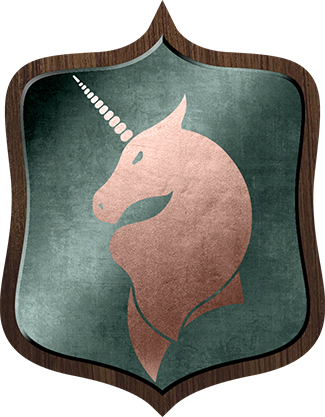
| Population: | 6,750 |
| Royal Family: | Nentres (king); |
| Notable inhabitants: | Bernard of Astolat (duke); Elaine the Fair (marchioness); |
| Politics: | Under the vigilant watch of the Nobility, Shalott became the chief center of learning for magicians throughout the land. Shalott, though not a large city, was a beautiful place of towering spires and glittering streets, and the people there were happy and well protected. The Druid's headquarters was the Arcane Citadel, an impressive building so named for its stone walls which gave off a faint light. The building had many libraries, research chambers, testing rooms, classrooms, meeting alcoves, and bedrooms. Today, Shalott is under constant scrutiny from its neighboring kingdoms. Witch trials are a common occurrence, and suspicion between neighbors runs rampant. |
| Recent History: | Shalott is a cultural and military city-state originally established by the Kingdom of Gore as a home for the waste folk of northern Albion. Prior to the founding of the city, the land was fought over by various factions of waste folk. The Goreans persuaded these folk to join their civilization by promising protection, resources, and religious enlightenment. While the establishment of Shalott was initially rocky, the city eventually became a symbol of unity and community for northern Goreans. Shalott was one of several city-states that emerged as the Kingdom of Gore was in decline. Long ago, most human magicians lived in the City of Gore, but eventually, many fled, leaving the restraining confines of Gore behind and traveled to Shalott, where they hoped to use their magic with greater freedom, wanting a place more suited to extensive use and study of magic. There, these magicians used their skills to build up the enchanted spires of the city and reveled in pursuing their studies. More druids followed, and the city became a haven for witches and a center of arcane study. The citizens of Shalott tolerated the magicians' endeavors and built up a bustling economy under the protection of their magic-using defenders. With the sorcerers of Shalott protecting the inhabitants who weren't magic-users with powerful protection spells, Shalott became a decadent, extravagant paradise. During the Fimbulwinter, Shalott pledged to support the alliance and gave large amounts of aid, soldiers, and sorcerers to the war effort. When the Purge directed itself on the violet city, the majority of the civilians were evacuated, leaving only a small but powerful resistance. The arcanic defenses and the magical guilds in the city tried to defend it, but they, alongside every druid in Shalott, fell to Uther in battle shortly after. |
Last edited:
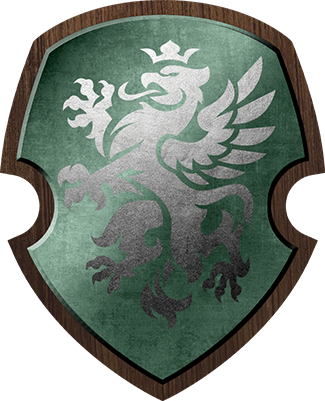
| Population: | 113,120 |
| Royal Family: | Brandegoris (king); |
| Notable inhabitants: | Pellewas (knight); |
| Politics: | When Queen Nix's grasp on her vast armies faltered after the Sundering of Gore, a contingent of nobles broke free of their Mephisto's iron will. Although this freedom seemed to be a blessing initially, these men and women were soon tormented by memories of the unspeakable horrors they had committed as possessed agents. Those who did not descend into madness were faced with a chilling realization: the entirety of Gore sought their destruction. In their darkest hour, the renegade Goreans were rallied together by the former Archdruid of Gore, Pelleian. Under their new queen's guidance, the independent druids established Stranggore in the ruins of the Goreans highlands. While some Strangoreans feared Peleian, others valued the security she provided. Studies into current Stranggore society point to growing paranoia and madness seeping in from what is believed to be the influence of Mephisto by proximity to remnants of his power deep within the blood of the old families. Whispers and rumors point to these families of yore going slowly mad due to this influence. In the Highlands, a number of people, mostly children of adolescent age, have been found abducted in the night, though the number has steeply grown this past generation. The Stranggore blames the abductions on the Inquisition. |
| Recent History: | Most of Stranggore are former Gorean druids who were brethren alongside all Goreans until their minds were swayed and corrupted by the Demon Prince, Mephisto. Under his will, they became deceptive, cruel, and violent. When the demons were defeated and banished during the Sundering of Gore, most of Stranggore was blasted to the bottom of the Sea. Those able to pass the boundaries of Stranggore's borders find little iconography of either Queen Nix or Mephisto outside of ancient ruins, crumbling and largely ignored by their society. The kingdom instead worshiped something new known as Angels. Rumors told outside the kingdom said that they sought to bring all under the angels' burning banner. Citizens within the kingdom who did not worship the angels were not forced to do so.113,120 |
Last edited:
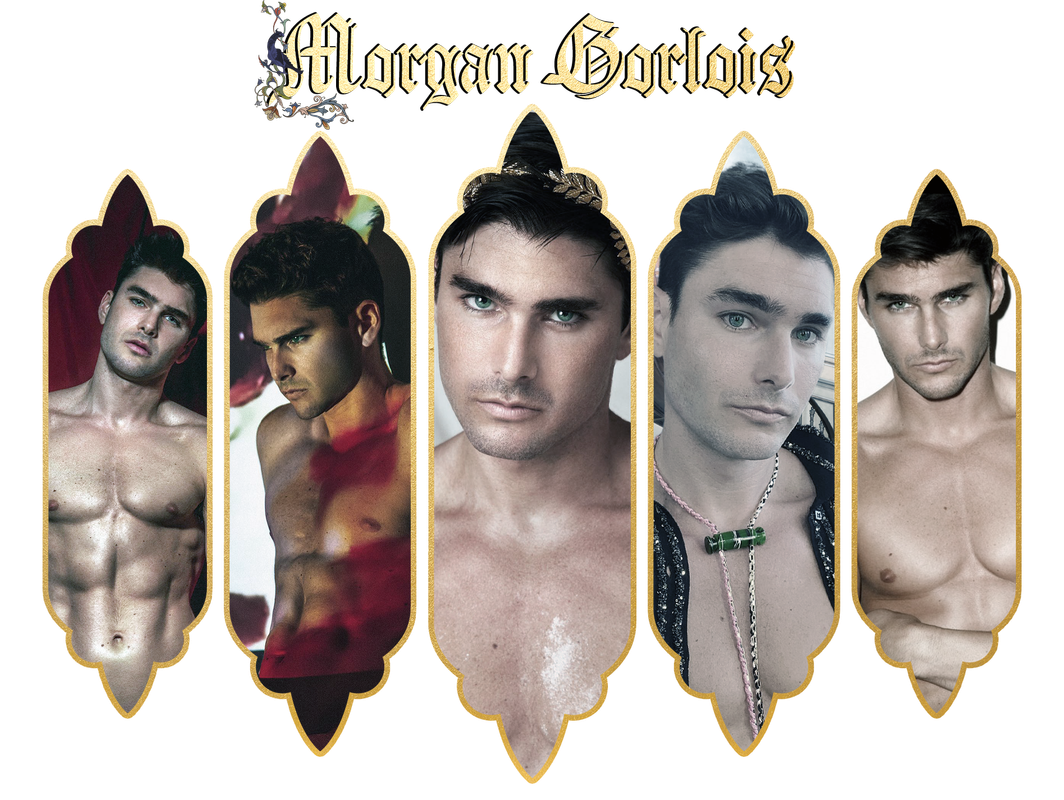
| Age: | 22 |
| Family: | Eirian Gorlois (father, deceased); Blancheniege Pendragon (mother); Morgause, Moronoe, Morin, Morfudd, Mortaise, Morcades, Morag, Morgana (sisters); Uther Pendragon (step-father); Arthur, Madoc Pendragon (step-brothers); Vortigern Pendragon (step-uncle); |
| Appearance: | Like all of his younger sisters, Morgan has inherited his mother's beautiful black hair and snow-white skin. However, Morgan's eyes are green, not like emeralds, more like flowing venom. The depth of his eyes stun when he blinks to show them off, or glares at someone who has wronged him. His nose is finely sculpted and his cheekbones high. His jawline forms a perfect line with his neck, where the muscles slip beneath ivory skin like water over smooth stone. Though his sheltered life has left his body with barely a scratch, his training has left his body lean and limber. . It also has left him with a killer's sense of balance and reflexes, which he uses to make up for his lack of size. He knows how to fight, how to climb, how to run with the best of them. He's beautiful in an almost inhuman way. |
| Personality: | Always curious, always learning, always trying to find a new way. Morgan is a confident and cunning man. Morgan has a tendency to be ruthless, often using his intelligence to get what he wants. He is very independent and not afraid of breaking the rules if it means achieving his goals. Morgan is a very calm, collected individual. He is not prone to outbursts and fits of anger. He can be manipulative and is not afraid to use his wiles to get what he wants. He is also not afraid to make alliances with those who will benefit him to attain his goals, even if they are against the law or common sense. Morgan is a consummate liar. He has been able to fool almost everyone around him and even himself. Morgan can be charming and convincing when the circumstances require it. Morgan's most distinguishing characteristic is his intelligence. Morgan is always thinking and planning. He has an eye for detail and will be able to see something or someone that others might have missed. His mind never stops going, and he seeks out knowledge wherever it is. |
| Background: | Morgan was born in Tintagel Keep to King Eirian Gorlois of Dumnonia and Lady Blancheneige of Brécheliant. His mother was so beautiful that the High King, Uther Pendragon of Camelot, started a war with her husband to have her. From Morgan's perspective, he was a happy prince growing up to take over a kingdom one day and the next, whisked off to a foreign country to live in the court of another. And so, Morgan was faced with a choice. If he were to live in the shadow of another, then a shadow he would become. He gave up his training as a knight. Instead, Morgan put his attention to other combat styles. Under the tutelage of Uther's spymaster, Morgan learned the art of the dagger, how to disappear in the shadows, and how to kill so precisely and silently the murder would only be discovered long after he was gone. These arts were not the flashy combat styles of tournaments; these were the assassinations of night. But how to kill was not enough for the prince. In Morgan, Merlin found a studious disciple. With what seemed like overzealous dedication, Morgan spent his years studying in the Chief Physician's tower until the sun could no longer light up the pages of the different books. To his family, he is seen as an insufferable know-it-all. Only Merlin sees the true purpose of Morgan's studies: to become even more deadly – how to make poison from herbs, how to use mathematics to create a disadvantage, how to use a man's anatomy against him, how to change the tide of a battle with strategy. Now, as time has passed, Morgan is seen rarely in the day outside of Merlin's chambers, training his body at night. His mother seems to grow increasingly distant from him every day. His lone companions are Merlin, and his sister, Morgause. As Uther grows older, Arthur's reign draws closer, leaving Morgan's future uncertain. |
Last edited:


